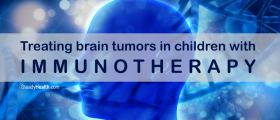
Adrenal gland tumor is not a rare medical condition thesedays. Even though some 95% of the discovered tumors are benign, there are stillremaining 5% of cancerous changes that present a threat. What exactly causesthe tumors of adrenal glands is not yet known, but there are some studies thatrevealed the genetic predisposition to these serious medical issues.
Adrenal glands are endocrine glands, located above the kidneys,one gland on top of each kidney. Because of the location, they are sometimescalled suprarenal (above kidney) glands. There are two parts of each adrenalgland: cortex and medulla. Cortex is the outside part, and it produces steroidhormones, including aldosterone and cortisol. They regulate numerous functionsof the body, including the regulation of salt and water balance. The other partis inner portion of the gland, known as medulla. It secretes epinephrine andnor-epinephrine (also called adrenaline and noradrenaline) hormones. Whenever thebody is exposed to some stress, the body synthesizes these hormones and causesreaction. Perspiration, hand trembling and heart palpitations are just some ofthe reactions of the body, provoked by adrenal medulla hormones.
Adrenal Gland Tumors
In general, there is a differentiation to benign andmalignant neoplasm of the adrenal gland. Some of the tumors are known to causeoverproduction of endocrine hormones. The term adrenal cancer refers tomalignant tumors, such as adrenocortical carcinoma, neuroblastoma and somecases of pheochromocytomas. Some of the benign tumors are: adrenal cortex adenomasand most pheoochromocytomas. Benigntumors do not spread and invade either surrounding nor distant tissues ororgans. They might cause problems only if they produce hormones, by creatingthe hormonal imbalance.
Some of the tumors originated in the cortex (adenoma,carcinoma) and some started in adrenal medulla, like pheochromocytoma orneuroblastoma.
As we said, some tumors may cause increased secretion ofadrenal hormones, thus triggering the formation of a tumor. Tumor then leads tothe overproduction of steroid hormones, catecholamines and aldosterone. Steroidhormones could provoke the Cushing’s syndrome, catecholamines can lead topheochromocytoma and aldosterone may cause Conn’s syndrome.
Adrenal Gland Tumor Symptoms
Adrenal gland tumors may be identified by a serious ofsymptoms and signs, including: hypertension, palpitations, panic attacks, excessivenervousness and headaches. Patients might also experience: excessive perspiration,weakness and tiredness, abdominal pain. Low blood potassium and diabetes couldbe also provoked by the tumor of the adrenal gland. Sometimes, an unexplainedweight change could indicate adrenal tumor. It is possible to gain or lose someweight because of the tumor.
How is Adrenal Tumor Treated?
Adrenal gland tumors are usually treated by the surgicalremoval of one or both adrenal glands. The surgical procedure might be laparoscopicor open adrenalectomy (removal of adrenal glands). Other treatments mayinclude: radiation therapy, chemotherapy and hormonal therapy.
Non-cancerous tumors that don’t secrete hormones areharmless. They don’t cause any severe symptoms and in general they don’t haveto be treated.
















Your thoughts on this
Loading...